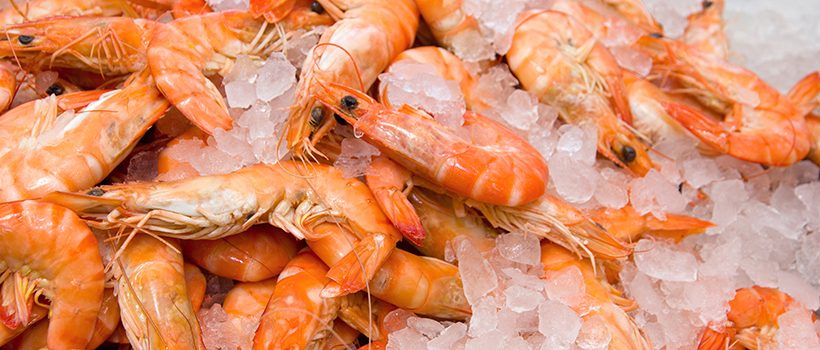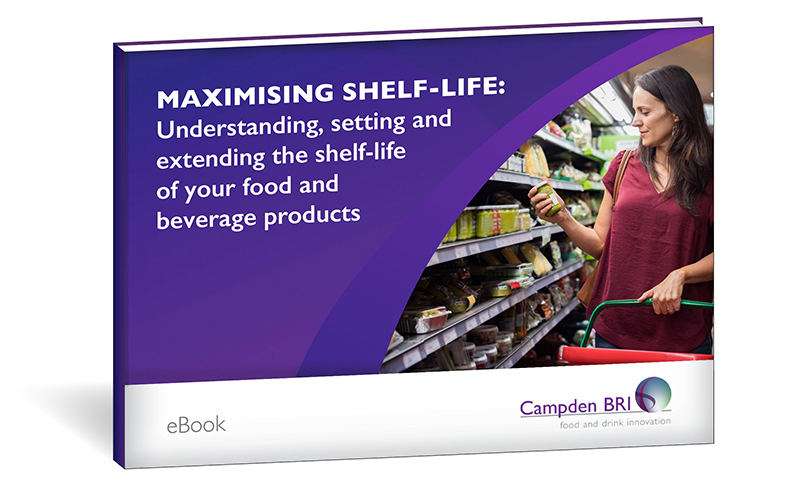
Superchilling has positive impacts on food preservation and energy consumption
Opportunity
Lyons Seafoods is the UK’s leading supplier of seafood, including freshly cooked prawns and shellfish. The team wanted to improve their efficiency and offer consumers an increased minimum life on receipt (MLOR).
With over 10 years experience helping the industry superchill their products, Campden BRI are the food and drink sector’s preferred choice for help with superchilling. This is further backed by our research that, in association with Defra, allowed our experts to deepen their understanding of how a product’s shelf-life can be extended using this technique.
After seeing our work in this area, Lyons considered superchilling their cooked prawn products as a possible solution.
Download the complete Maximising Shelf-life eBook, for free, to unlock the tools for measuring and maximising the shelf-life of your food and drink products whilst ensuring their safety and quality.

Approach
Superchilling technologies can be achieved using standard blast chillers, and use a technique of cooling a product down to a temperature at which the product starts to freeze, generally around –1.5°C to –2°C, and then storing it at that temperature. At this range some of the product is ice and some contains liquid water.
Superchilling helps reduce water and electricity use by 20%
Superchilling dramatically reduces the rate of appearance of microbiological and chemical spoilage defects and allows a long shelf-life to be achieved compared to the conventionally chilled product (>3°C to 8°C), without affecting sensory attributes. There is also an additional benefit in the form of a reduction in energy use.
Results
Lesley Galpin, Head of Technical at Lyons Seafoods, said:
We introduced superchilling on one of our cooked prawn products as an experiment after we saw the work done by Campden BRI. We were looking for ways to increase our efficiency, and to offer our customers an increased minimum life on receipt (MLOR). Our results were fantastic. Not only did we increase MLOR, but our water and energy use fell by about twenty percent.”
The benefits of superchilling became clear for Lyons Seafoods when Christmas – usually the busiest period for the company – came around.
The day-to-day impact of superchilling was shown by our experience last Christmas. Like most FMCG manufacturers, Christmas is usually a stressful time with increased volumes. Last Christmas felt like we had lower volumes due to the process being much more streamlined, with less stopping and starting. To our surprise, when we looked at the figures, we had actually produced more than usual. Superchilling allows us to supply from a buffer stock, and so makes production more predictable and efficient.”
Additional benefits of superchilling for Lyons Seafoods included:
- Saving time and resources that can be invested to, for example, introduce new lines
- Ability to cook bigger batches less often to:
- Decrease product waste with fewer production starts and stops throughout the week
- Reduce the line running times reducing the labour requirement
- Increase cooking yield
- Reduce hygiene costs due to less production line usage
- Decreasing effluent usage (approx. 20%)
- Saving time and money with fewer batches which results in fewer EOL (end of life) sampling and microbiological analysis
- Yielding improved EOL microbiology results, in terms of total viable counts (TVCs)
In the process of superchilling it is important to achieve swift temperature reduction in order to get the ice fraction just right, due the textural and structural damage ice crystals can incur. We helped Lyons Seafoods ensure the quality of their superchilled seafood product with sensory quality analysis and microbiology testing.
The Campden BRI difference
The food and drink industry presents a fast-paced, constantly changing environment that requires creative thinking, quick responses and cost-effective solutions to meet consumer demand. We can help overcome these challenges and support you in maximising shelf-life to get the most out of your products.
We take a holistic approach to shelf-life testing that provides insight into all aspects of the food. We can assess how your product performs over time and identify the changes to ingredients, packaging or to other contributory factors that will help maximise shelf-life across a variety of product types, to deliver results you can trust. Using state-of-the-art facilities and the latest methods and technology, you can be sure of a high-quality service that will help you to improve your products, processes and profitability, whilst protecting product safety and quality.
We provide many members and clients with tailored, expert support in all areas of shelf-life evaluation, maximisation and extension, and have specific expertise in microbiology, chemistry, sensory, regulatory and product innovation services. Get in touch to join those already benefitting from support.
Download our FREE Maximising Shelf-life eBook today!
Explore different strategies to maximise and extend product shelf-life, without compromising safety or quality.
How can we help you?
If you’d like to find out more about how we can help with the self-life of your products, contact our Support Team.






